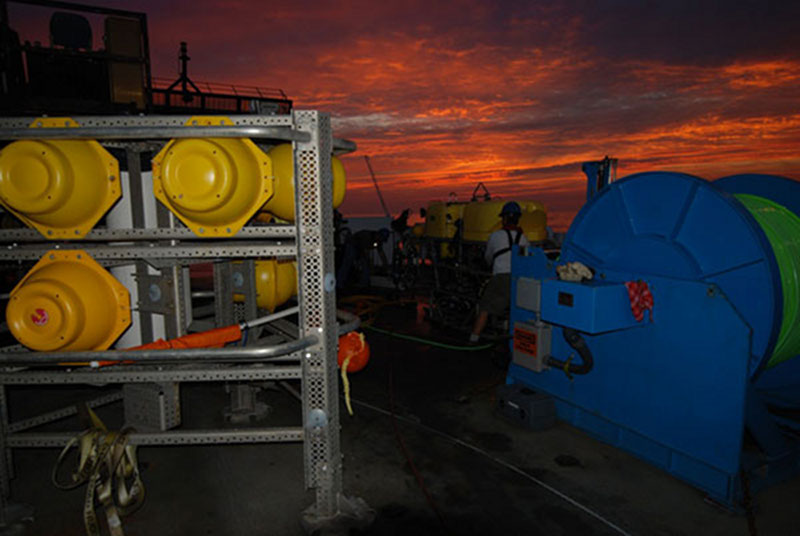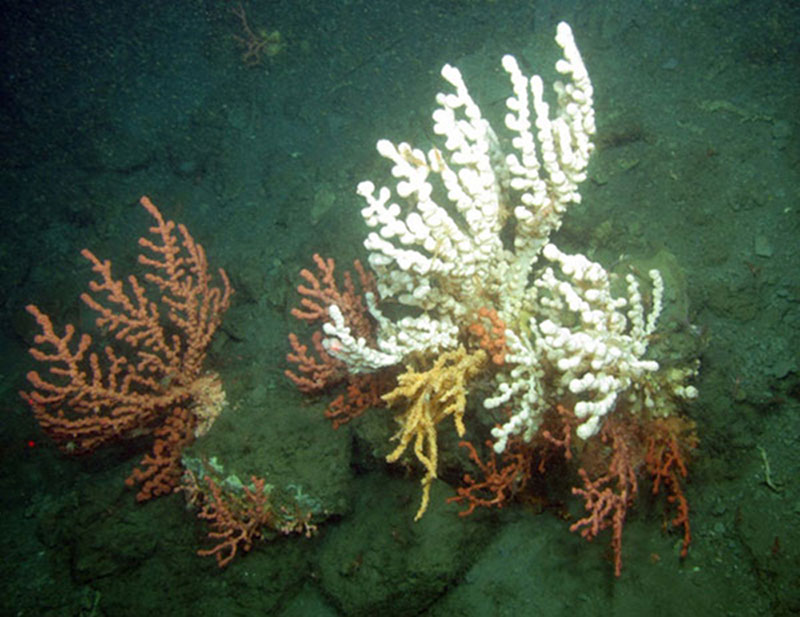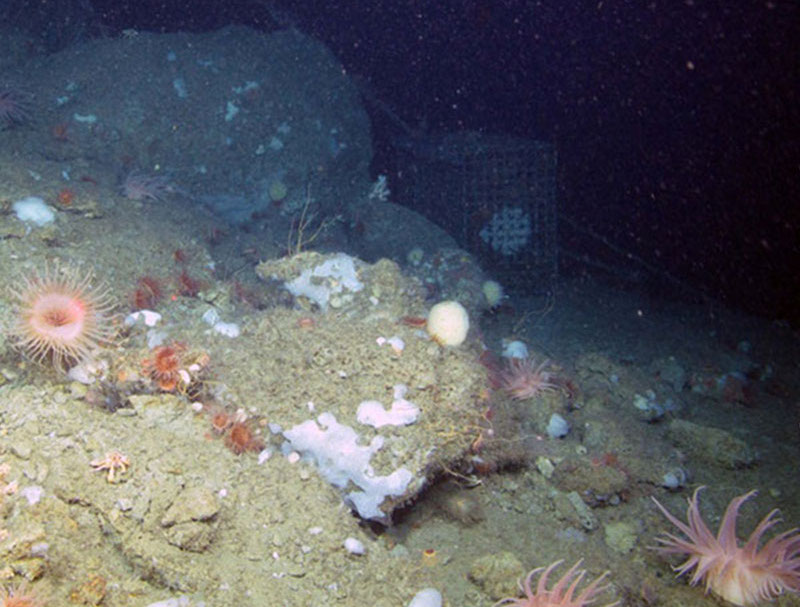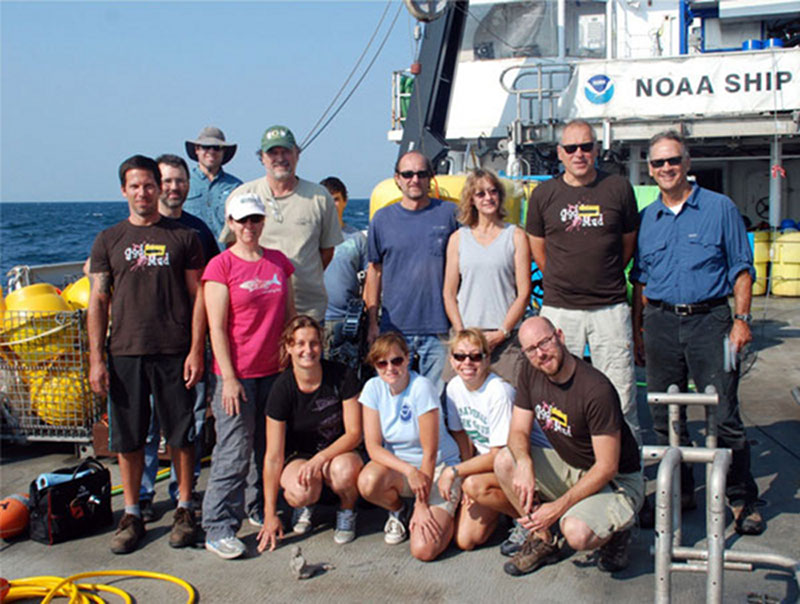
By
Steve W. Ross - UNC-W, Center for Marine Science
Sandra Brooke - Marine Conservation Institute/OIMB

We ended many days with beautiful sunsets. The UNCW lander on the left will be deployed during Leg 2 of this expedition. Image courtesy of SW Ross of Deepwater Canyons 2012 Expedition, NOAA-OER/BOEM. Download image (jpg, 75 KB).
We have now had two days off the ship to reflect on the first leg of the Deepwater Canyons expedition. Overall, the first leg was a great success; we accomplished 11 ROV dives and over 150 stations from other operations (CTD casts, box cores, mono-cores). We also deployed two benthic landers and two moorings each with several instruments to record oceanographic conditions in the canyon axis. We lost very little time to technical or weather issues. One thing that certainly contributed to our productivity was the very good weather with only one day of rough seas. Most of the time the seas were less than 3 ft and the winds less than 15 knots.

Bubblegum coral displays many colors. Image courtesy of Deepwater Canyons 2012 Expedition, NOAA-OER/BOEM. Download image (jpg, 112 KB).
We found most of the corals near the head of Baltimore Canyon where most of the rugged bottom occurred. The primary coral species we encountered was in the genus Paragorgia (bubblegum coral). This coral occurred in various colors from white to pink to bright red, and one colony was estimated to be almost 4.5 meters across. It was in these coral habitats that we encountered the strongest bottom currents, some strong enough to stop the ROV. Bottom currents also seemed to change direction during some dives, which may be related to tidal patterns. Data from the instruments on the benthic landers and moorings will help us to determine how water flows within and around the canyons. These data, as well as our CTD casts, will help better define a layer of turbidity that we encountered in the middle of Baltimore Canyon that may have a strong influence on canyon biology.

Abandoned commercial fishing trap – one of many seen in Baltimore Canyon. Image courtesy of Deepwater Canyons 2012 Expedition, NOAA-OER/BOEM. Download image (jpg, 112 KB).

Plastic debris (right) was not uncommon on some dives. Image courtesy of Deepwater Canyons 2012 Expedition, NOAA-OER/BOEM. Download image (jpg, 119 KB).
In almost every ROV dive we found abandoned fishing gear that included individual traps, groups of traps and lines, and a trawl net. Trash (plastic bags, cans, etc.) was also common in places. We also saw a lot of fishing activity with sport fishing and commercial boats around us on nearly every day.
This first cruise leg was the longest operational cruise the NOAA Ship Nancy Foster has conducted and one of the most diverse in terms of gear deployment and objectives. We want to commend the officers and crew of this ship for outstanding performance and helping us accomplish more scientific objectives than we had set out to do. We also wish to acknowledge the excellent team-work displayed by our diverse international science team.

Deepwater Cayons Leg I science crew: (front row left to right)- Mike Rhode, Amanda Demopoulos, Furu Mienis, Katherine Coykendall, Chris Kellogg, Craig Robertson. (Back row left to right) – Kevin Joy, Chris Hartman, Eric Hannaman, Joe Mangiafico, Steve Ross, Sandra Brooke, Gerard Duineveld, Mark Stepanek. Image courtesy of Deepwater Canyons 2012 Expedition, NOAA-OER/BOEM. Download image (jpg, 129 KB).